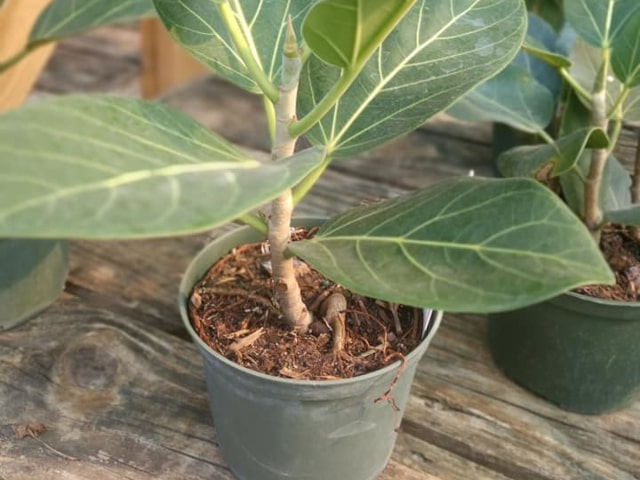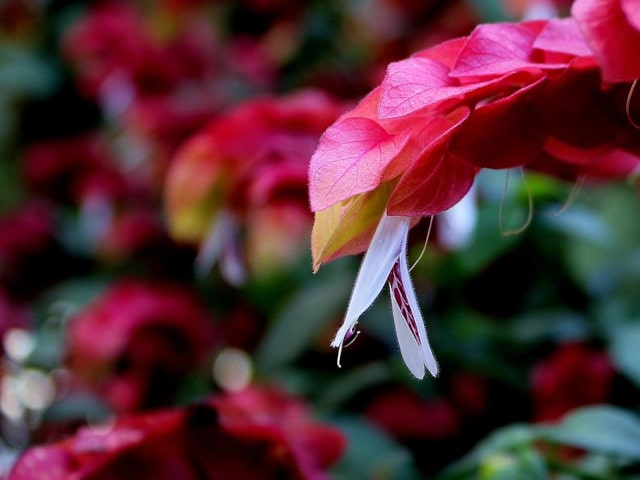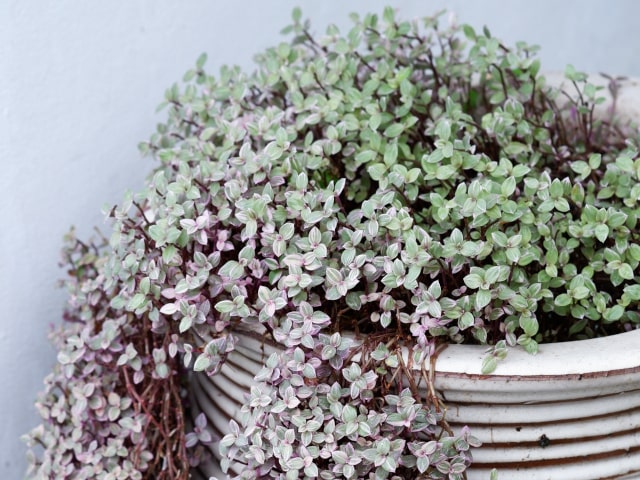
Ficus Audrey is a beautiful plant that is actually a specific variety of Ficus Benghalensis. It is an evergreen tree that is also known as the Strangling Fig. It belong to the family Moraceae. Some of the most common names for this plant are: Banyan Tree, Indian Banyan, Banyan Fig, Peepal and Bahupada. Close cousins of Ficus Audrey include Ficus Benjamina, also known as Weeping Fig, and Ficus Pandurata, also known as Fiddle Leaf Fig.
Ficus Audrey is a plant native to Indian and Pakistan. The largest specimen grows in India, where they provide canopy coverage and shade. This Ficus tree is considered sacred and it is believed to be a tree where Buddha received enlightenment.
This plant grows between 65 and 98 inches in height. However, when grown indoors as a potted plant, it reaches 5 to 10 inches in height. It has a spreading crown and light-colored trunk. The leaves are velvet green, with pale veins throughout the leaves. It is common for Ficus Audrey to start out as an epiphyte, growing on a branch of another tree. As it grows, the aerial roots go down to the ground and form roots underground. The roots become thicker and more vigorous, and this is how this Ficus supports itself. This plant flowers, but the blooms are small and insignificant.
There are many different ways to use this ficus plant. They are often used as ornamental tropic plants in homes. They work amazingly with Ficus Lyrata, also known as the Rubber Plant, and Ficus Benjamina, the Weeping Fig. In India, this plant is used for religious purposes. The plant can also be used as a material and timber for tying, and it is often growing along roadsides. It is also possible to grow it in parks and open gardens to provide shade.
In order to provide your Ficus Audrey with everything it needs to grow strong and thrive, there are some requirements you need to fulfill:
Temperature
A Ficus Audrey will not tolerate low temperatures and draft. Keep in mind that this is a tropical plant, so you need to provide it with temperatures above 60 degrees F (15-16 degrees Celsius). To make your plant thrive and reach optimal growth, the temperature should be above 70 degrees F (21 degree Celsius).
Also, make sure to protect your plant from cold drafts. It should never be placed on a drafty spot. It should be protected from drafts coming from doors, windows or air-conditioners. The best hardiness zones for this plant are USDA 10 to 12.
Soil
Ficus Audrey needs to be planted in fertile soil. Make sure that the soil is well-draining, with plenty of drainage holes on the pot. The best potting mix for this Ficus is soil-based because it gives the plant all the right nutrients it needs to thrive.
Light
Ficus Audrey thrives under bright indirect light, so you need to provide plenty of it. It will not tolerate prolonged periods of low light conditions, nor does it tolerate direct sun. If inadequate lighting requirements are provided, the Ficus will drop its leaves. To prevent this, make sure to choose a well-light spot in your home that receives indirect light. An east-facing window is a great choice.
Watering
This plant doesn't like overwatering, so be careful about how much water you provide. Before watering, make sure to check the soil for moisture. If it feels moist under the surface, then you should wait. Water only when the soil doesn't feel moist under the surface. The best growing conditions for this Ficus is evenly and consistently moist soil, with short drought periods between watering.
Never allow your Ficus Audrey to sit in water. You should always make sure that the top 2 to 3 inches of soil are dry before you water.
Fertilizing
You should fertilize your Ficus Audrey at the start of the growing season. The best method are slow-release pellets. Keep in mind that these plants grow fast, so they benefit when they are fertilized every month between the spring and summer seasons. In the fall and winter, you should fertilize once per two months.
Humidity
This plant likes humidity, so make sure that the air is never too dry. Mist its leaves regularly to improve humidity. You may also add a pebble tray with water at the bottom of the pot to enhance humidity.
Repotting
Keep in mind that a healthy Ficus Audrey will quickly outgrow its container. This is why it's important to repot and transplant it into a larger container. Repotting should be done once per year. This will slow down its growth somewhat so the plant will remain manageable in terms of size. When repotting, make sure to use high-quality potting soil and a container with drainage holes.
Maintenance
Keep in mind that Ficus Audrey requires some maintenance, but it is easier to care for than many other trees. It is more tolerant to shifts in its environment. The only thing you should really watch for is excess water. However, even with overwatering, a Ficus Audrey is likely to recover.
In order to maintain the shape and size of your Ficus Audrey, make sure to prune it during the winter. This is when the growth is slower. To prune, use a sharp pair of scissors and remember to wear gloves. When pruning, make sure to cut the Ficus back a little above the node. This will encourage new growth.
Propagating Ficus Audrey
You can propagate a Ficus Audrey using tip cuttings or by starting new plants from seeds.
Propagating with cuttings. To start your plant like this, take cuttings from a mature plant and use a rooting hormone. It is best to use non-woody stems for this purpose. When choosing a cutting, make sure to include at least half of an inch of stem above and below the leaf. Once cuttings are ready, place them in a rooting mixture. The roots will start to develop in a few weeks. If you choose to grow your Ficus Audrey as an outdoor plant, transplant it into the garden once the new leaves start to emerge.
Propagating with seeds. It is always important to let the seeds dry before you remove them from the plant. You can start them in a planting container by germinating them and letting them grow into new plants. However, keep in mind that this method of propagation takes more time than propagation with cuttings.
Diseases and Pests
This Ficus plant can encounter certain health issues, so it is important to monitor it regularly. Probably the most common problem is Southern blight, as well as crown gall and twig dieback as a result of fungal and bacterial problems. These problems can also lead to leaf spots. Make sure to treat your plant as soon as you notice a disease developing.
When it comes to pests, Ficus plants are susceptible to spider mites, root-knot nematodes and thrips. These problems are particularly common during winter. Scale insects and mealybugs are another common issue. To get rid of these pests, the best way to go is to use neem oil.




0 Comments